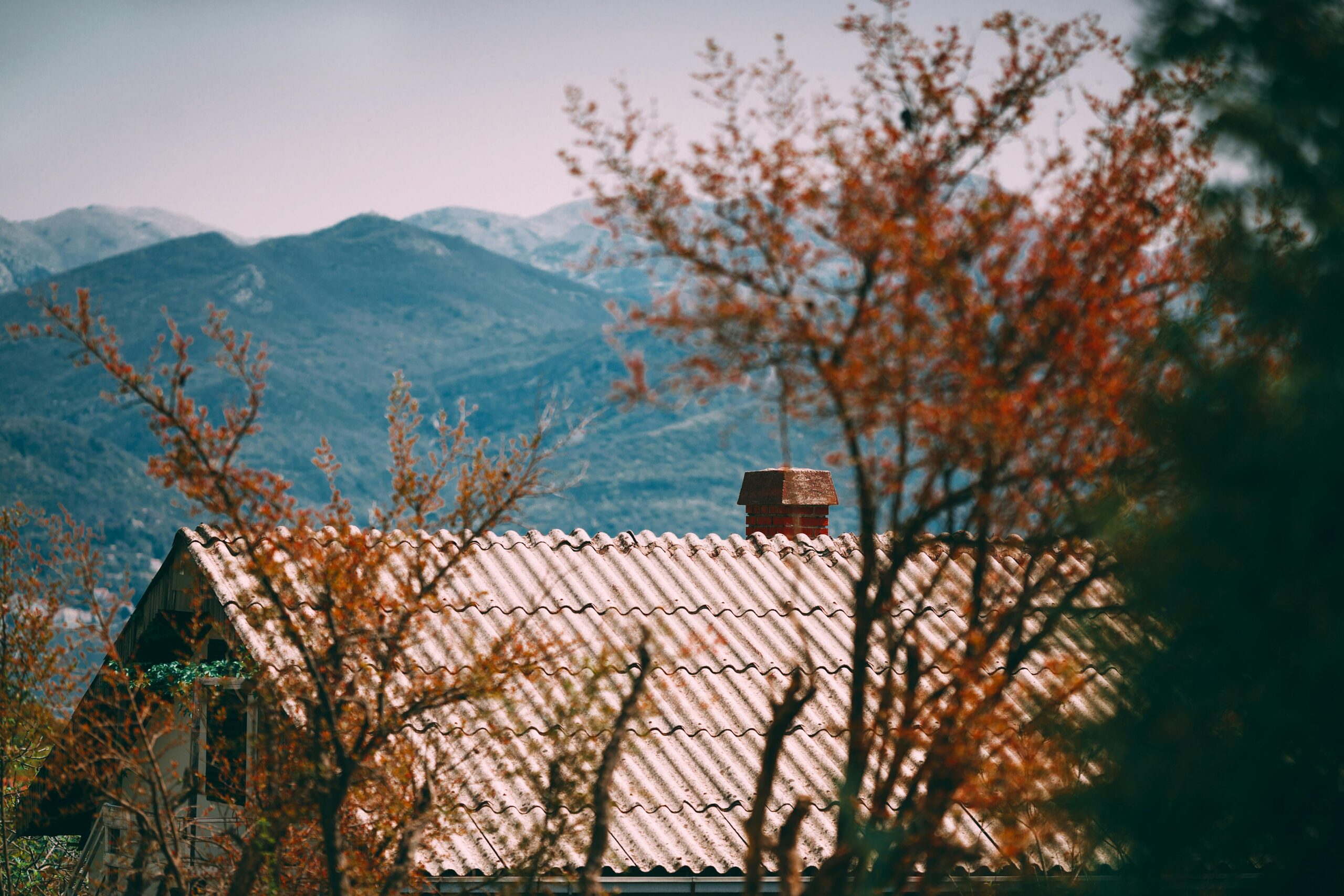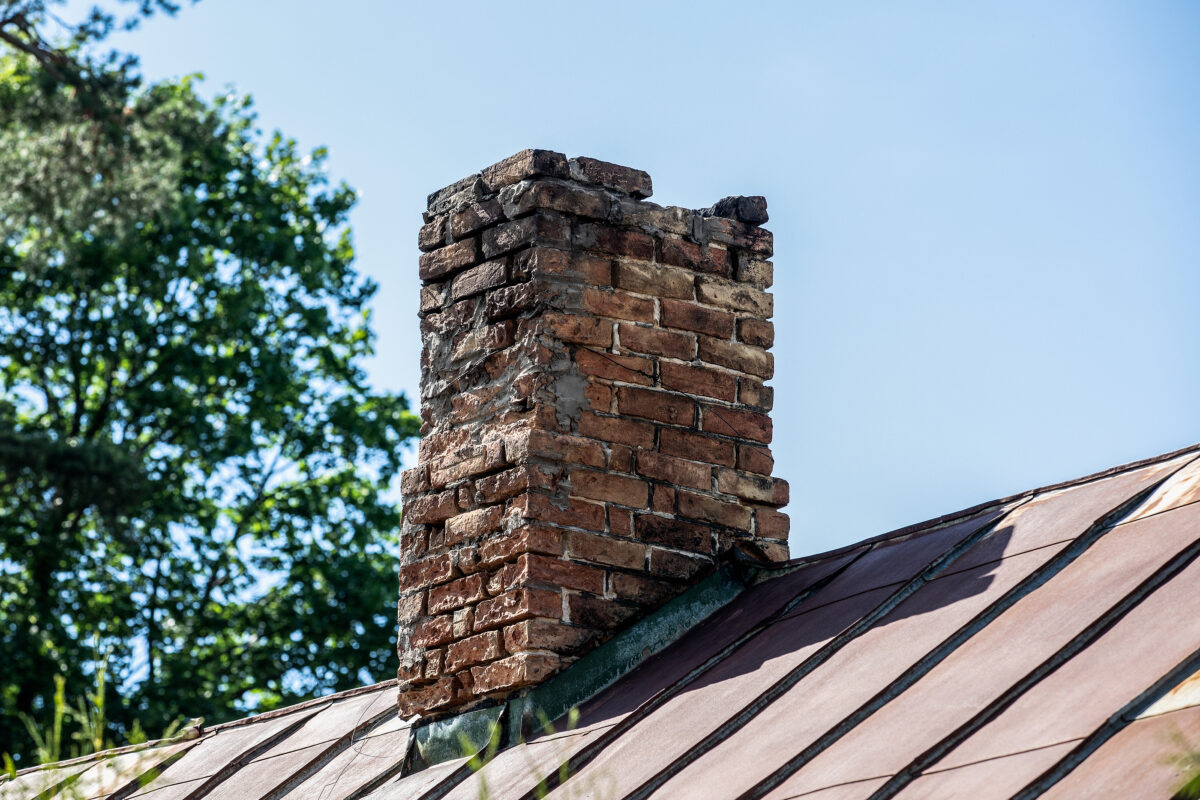Neglecting your chimney isn’t just about aesthetics (though a sooty chimney isn’t exactly a showstopper). In fact, it can pose serious safety risks. Creosote buildup, a byproduct of burning wood or actually anything, is highly flammable and can easily ignite, leading to devastating chimney fires. Additionally, damaged or cracked chimneys can allow harmful carbon monoxide to leak into the home, creating a silent and potentially deadly threat.
So, how often should you have your chimney inspected? Let’s explain the answer and explore the best practices for keeping your fireplace a safe and enjoyable focal point of your home.
The Importance of Chimney Inspections
Regular chimney inspections are not just a box to tick on your home maintenance list; they are crucial for ensuring the safety, efficiency, and longevity of your fireplace and home.
Let’s explore why:
Safety Concerns
Blockages and Creosote Buildup: Over time, debris like leaves, twigs, and animal nests can accumulate in your chimney, restricting airflow and creating fire hazards. Additionally, burning wood or almost anything, produces creosote, a highly flammable substance. If not cleaned regularly, creosote can build up on the chimney walls, increasing the risk of a chimney fire that can spread rapidly to your home.
Structural Issues: Cracks, loose bricks, and deterioration in the chimney liner can create pathways for sparks and smoke to escape, igniting surrounding combustible materials. These issues can also allow harmful gases like carbon monoxide to leak into your home, posing serious health risks.
Efficiency and Performance
Efficiency: A clean, well-maintained chimney ensures optimal airflow, allowing smoke and fumes to vent correctly. This not only improves the efficiency of your fireplace but also prevents smoke from backing up into your home, creating an unpleasant and potentially hazardous situation.
Prevent Costly Repairs: Regular inspections can identify minor problems like cracks, loose mortar, or deteriorating flue liners in their early stages. Addressing these issues promptly is significantly cheaper than dealing with extensive repairs or replacements later down the line.
By prioritizing chimney inspections, you safeguard your home and family and ensure your fireplace operates at peak performance, saving you money on energy bills and preventing costly repairs in the long run.
How Often Should You Have Your Chimney Inspected?
The National Fire Protection Association (NFPA) Standard 211 establishes a clear guideline for chimney inspections: at least once a year. This annual inspection is crucial for all chimneys, fireplaces, and vents, regardless of their age or perceived condition.
However, it’s important to remember that this is a general recommendation. Several factors can influence the actual frequency of inspections needed for your specific chimney. Here’s what to consider:
- Usage: Frequent fireplace use, especially during the colder months, naturally leads to a faster buildup of creosote and debris. If you use your fireplace frequently, consider scheduling inspections twice a year, particularly before and after the peak burning season.
- Fuel Type: The type of fuel you burn in your fireplace also plays a role. Wood, for example, produces more creosote than other fuels like gas or pellets. If you primarily use wood, it’s essential to err on the side of caution and schedule more frequent inspections.
- Changes to the System: Any changes made to your fireplace or chimney system, such as relining the flue or installing a new damper, may warrant an additional inspection to ensure everything is functioning correctly and safely.
By considering these factors in conjunction with the general NFPA recommendation, you can establish a personalized inspection schedule that keeps your chimney safe and efficient. Don’t hesitate to consult with a certified chimney sweep for specific advice tailored to your unique situation.
Types of Chimney Inspections
Not all chimney inspections are created equal. Different levels cater to varying needs and situations. Here’s a breakdown of the three main types of chimney inspections:
Level 1 Inspection:
This is the most basic and recommended annually for chimneys that are in continual service, haven’t undergone any alterations, and utilize the same appliances throughout the year. During a Level 1 inspection, a certified chimney sweep will perform a visual examination of the following:
- Interior and exterior of the chimney for cracks, deterioration, or blockages
- Flue liner for damage or creosote buildup
- Chimney cap for proper functioning
- Damper for proper operation
This inspection typically involves using a flashlight and basic tools to access readily visible areas. It’s a good way to identify potential issues early on and ensure your chimney is operating safely and efficiently.
Level 2 Inspection:
This more in-depth inspection is recommended when:
- Changes are made to the system: This could include installing a new fireplace insert, relining the flue, or altering the venting system.
- A significant event has occurred: This could be anything from a chimney fire, earthquake, or strong windstorm that might have caused damage to the chimney.
A Level 2 inspection typically involves everything in a Level 1 inspection, plus:
- A thorough cleaning of the chimney
- Video camera inspection of the flue liner to assess its condition and identify any hidden problems
- Smoke test to check for leaks in the system
- Inspection of accessible portions of the attic and crawl space to look for signs of water damage or deterioration
Level 3 Inspection:
This is the most thorough and intrusive type of inspection and is only recommended in specific situations, such as:
- Significant damage to the chimney, like after a major fire or structural collapse
- Real estate transaction where a thorough evaluation of the chimney’s condition is needed
A Level 3 inspection may involve removing parts of the building or chimney structure to gain access for a complete assessment. This can be disruptive and involve significant cost, so it’s only recommended when absolutely necessary.
By understanding the different types of chimney inspections and consulting with a qualified professional, you can choose the best approach to ensure the safety and functionality of your fireplace system.

What Happens During a Chimney Inspection?
A chimney inspection typically involves two key aspects: visual examination and cleaning and maintenance.
Visual Examination:
During the visual examination, a certified chimney sweep will meticulously assess various components of your chimney system, looking for potential problems. Here’s what they’ll typically inspect:
- Interior and exterior of the chimney: The inspector will check for cracks, spalling (crumbling) bricks, loose mortar, and any signs of water damage or deterioration.
- Flue liner: The inspector will use a flashlight and potentially a camera to examine the flue liner for damage, corrosion, or excessive creosote buildup.
- Chimney cap: They will ensure the cap is properly secured, functioning correctly, and preventing debris from entering the chimney.
- Damper: The inspector will verify that the damper opens and closes smoothly and seals properly when shut.
Cleaning and Maintenance:
Following the visual examination, the inspector will likely recommend cleaning your chimney if necessary. This typically involves using specialized brushes and vacuums to remove creosote buildup, debris, and blockages from the flue liner and smoke chamber.
In addition to cleaning, the inspector might perform minor maintenance tasks during the inspection, such as:
- Sealing minor cracks with appropriate mortar
- Tightening loose damper components
- Recommending further repairs if needed
It’s important to remember that the specific steps involved in a chimney inspection may vary depending on the type of inspection being performed and the condition of your chimney.
Choosing a Chimney Inspection Service
Having a qualified and experienced professional inspect your chimney is crucial. Here’s what to look for when choosing a chimney inspection service:
Certification and Experience:
- Seek NCSG (National Chimney Sweep Guild) certified professionals: NCSG certification signifies that the inspector has undergone rigorous training and testing, demonstrating their competence in chimney inspections, cleaning, and repairs.
- Look for good online reviews: Checking reviews on platforms like Google, Yelp, or the Better Business Bureau can provide valuable insights into other customers’ experiences with the service provider.
What to Expect:
Once you’ve chosen a reputable service provider, here’s a general outline of what to expect during the inspection process:
- Scheduling: Contact the company to schedule an appointment. Be prepared to answer questions about your fireplace and chimney usage to help them determine the appropriate level of inspection.
- Inspection Duration: A typical Level 1 inspection usually takes around 45 minutes, while Level 2 and 3 inspections can take longer depending on the complexity of the work.
- Inspection Report: After completing the inspection, the professional will provide a detailed report outlining their findings, including any identified problems, recommendations for cleaning or repairs, and estimated costs for any necessary services.
Remember, don’t hesitate to ask questions and clarify any concerns you may have throughout the process. A qualified and professional chimney inspector will be happy to address your inquiries and ensure you understand the condition of your chimney system.
Final Thoughts
Regular chimney inspections are more than just a good practice; they are vital for ensuring the safety, efficiency, and longevity of your fireplace system. By understanding the recommended frequency, different types of inspections, and what to expect during the process, you can make informed decisions about keeping your chimney functioning optimally.
If you haven’t had your chimney inspected in the past year or have any concerns about its condition, don’t hesitate to schedule an appointment with a qualified professional like The Irish Sweep. Our NCSG-certified master sweeps are dedicated to providing thorough and reliable assessments, ensuring your fireplace remains a safe and enjoyable focal point in your home.
Contact The Irish Sweep today for a comprehensive chimney inspection and peace of mind.


